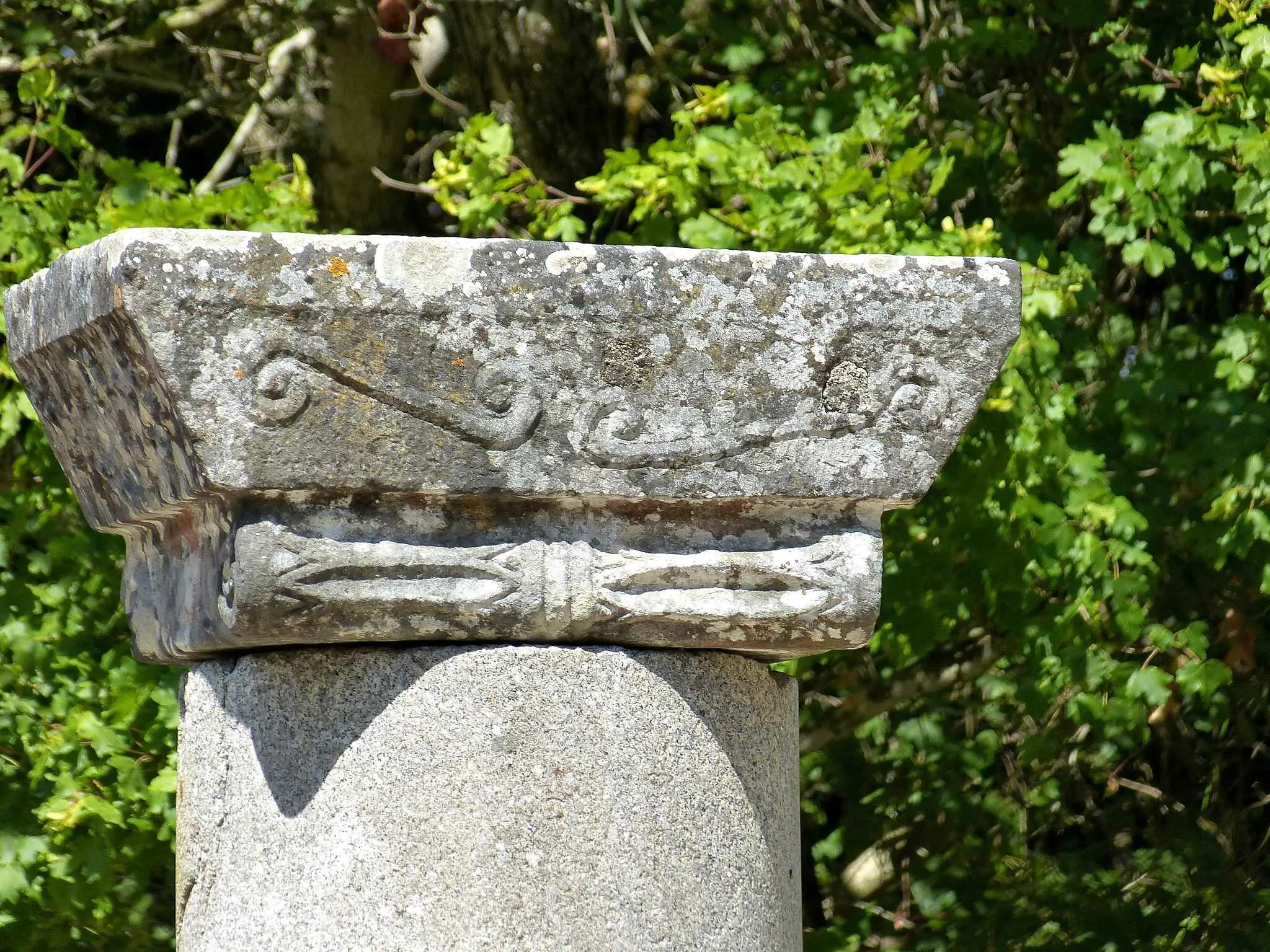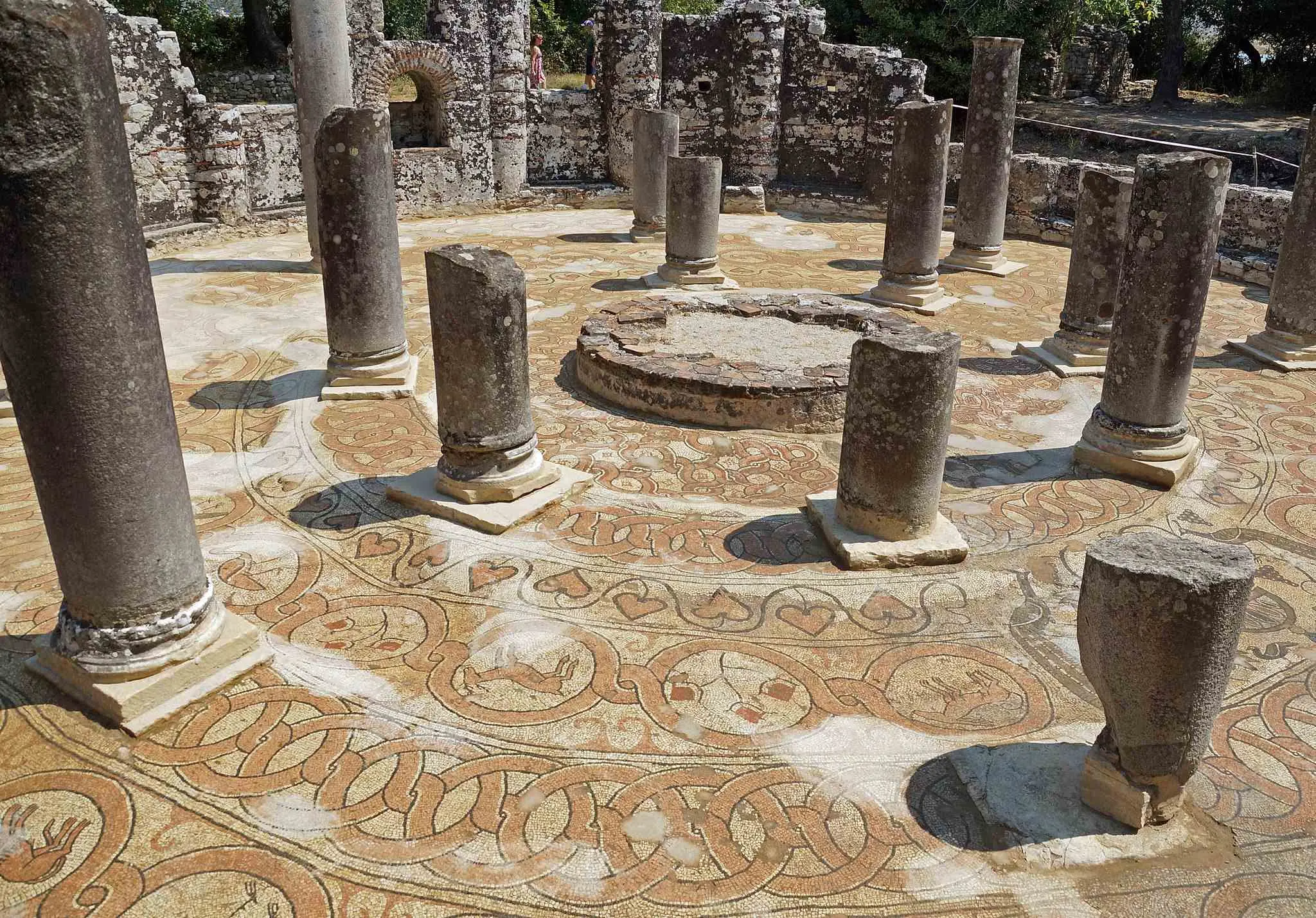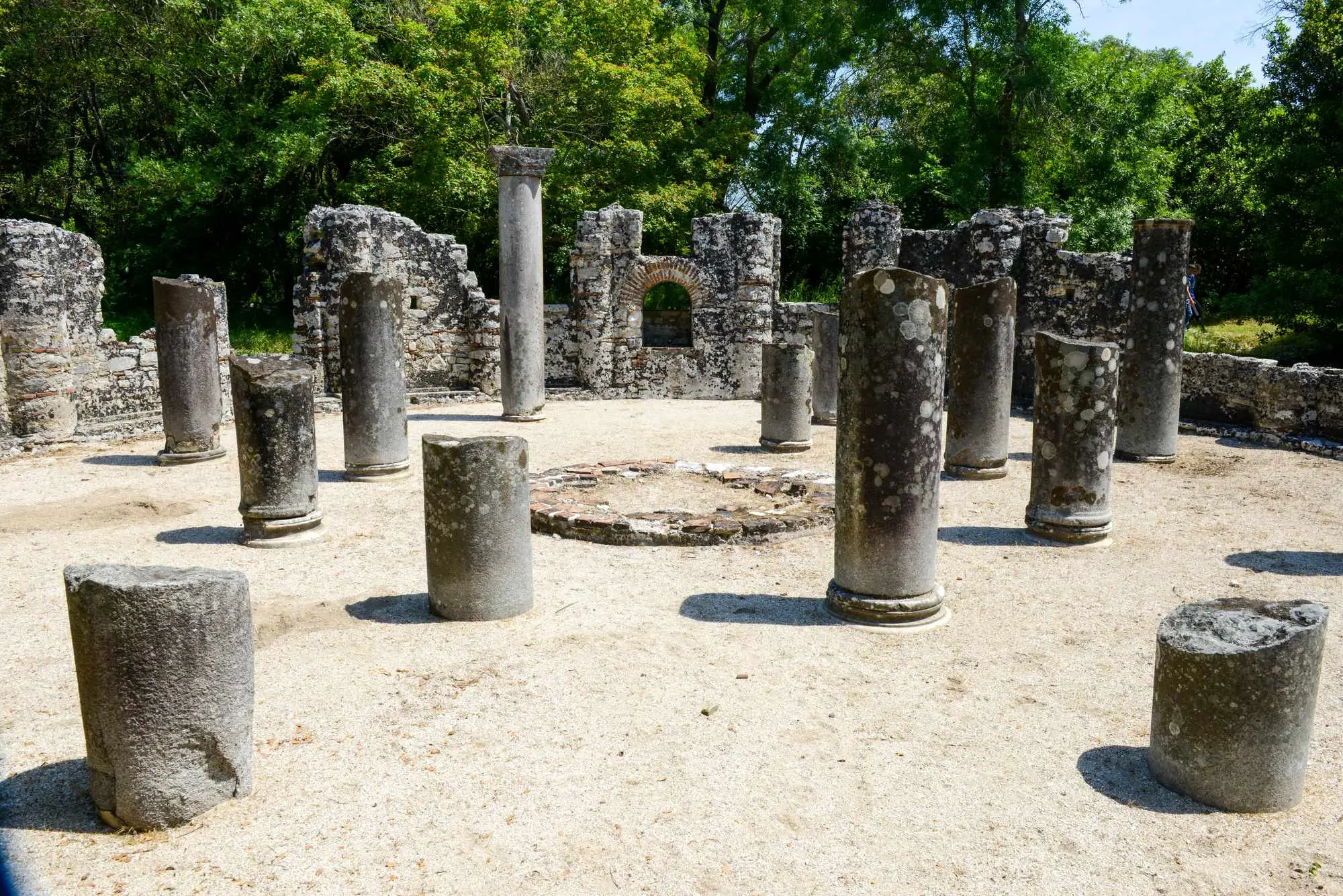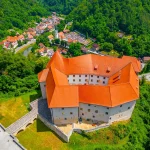In the heart of Butrint, there is a baptistery that preserves the spiritual and cultural heritage of the Mediterranean
Butrint, a city in the southwest of Albania, is strategically important between the Ionian Sea and Lake Butrint. It has been inhabited since prehistoric times. Over the centuries, it developed under the influence of the Greeks, Romans, Byzantines, and Venetians, who left their mark on its architecture and culture. Among the numerous historical buildings of this locality, a special place is occupied by the early Christian baptistery from the 6th century, a masterpiece of architecture and spirituality.

Baptistery, Butrinit, Photo: Wolfgang Sauber, CC BY-SA 4.0
The baptistery, discovered in 1928 during excavations led by the Italian archaeologist Luigi Maria Ugolini, is located inside the former Roman bathhouse. Its architecture, with a circular floor plan with a diameter of 14.5 meters and a central cruciform pool, reflects the monumentality and spiritual significance of the early Christian era. Around the pool is a double row of 16 columns of Egyptian granite, which supports a wooden roof. The capitals (upper part) of the columns, decorated with plant and cross motifs, reflect a high artistic level, while the walls were painted with frescoes.
The floor of the baptistery is decorated with a spectacular mosaic, one of the most beautiful in early Christian art. The mosaic consists of seven concentric circles containing geometric patterns, plant motifs, and symbolic representations of animals. The peacocks, drinking from the chalice, symbolize the Eucharist and eternal life, while the deer, drinking from the spring, represents spiritual thirst and conversion. The motif of birds, plants, and springs in early Christian iconography often symbolizes paradise and divine renewal.

Baptistery, Butrinit, Photo: Albinfo, CC BY-SA 4.0
The baptistery played a key role in the religious life of the early Christian community of Butrint. The rite of baptism symbolized cleansing from sin and entry into the community of believers. The water, which was brought from the cistern, was heated in a special room before the ceremony, which further testifies to the thoughtfulness of the building’s design.

Baptistery, Butrinit, Photo: Elias Bizannes, CC BY-SA 2.0
Throughout history, Butrint has been important not only as a commercial center but also as a religious and cultural center of this part of the Mediterranean. Today, the baptistery is a symbol of early Christian art and spirituality, and its preservation attracts tourists and archaeologists worldwide. In 1992, it was added to the UNESCO World Heritage List, further confirming its universal value.
A visit to Butrint provides an opportunity to get to know the rich history, unique architecture, and spectacular natural environment.
Explore the national park…
A destination you must visit! National Park Butrint is nature’s masterpiece




Leave a Reply